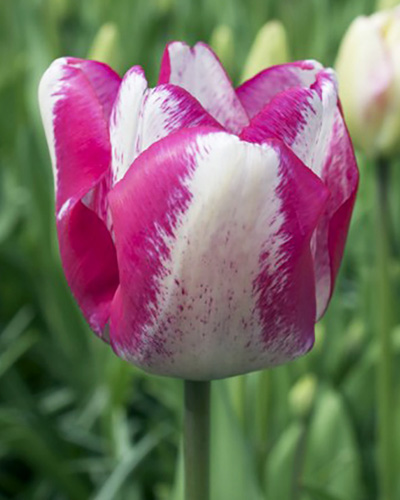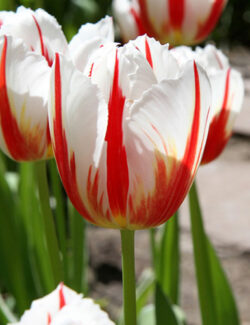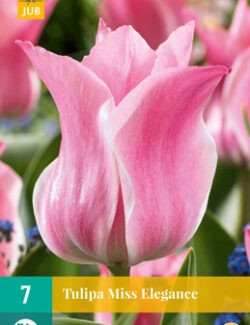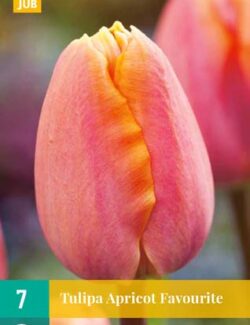Tulip Mata Hari is a glamorous Triumph tulip named after the famous dancer and spy, and it certainly lives up to its evocative name. The petals first open pure white, crisply edged in hot pink, creating a sharp and dramatic contrast. As the bloom matures, the bright pink edges soften into a delicate blush, giving the flower an ever-changing, painterly effect that feels both refined and romantic. This shifting colour palette ensures that beds and borders planted with Mata Hari remain visually dynamic throughout its mid-spring flowering window. The classic tulip shape — broad, cup-like, and symmetrical — gives a strong architectural presence, while the sultry colour tones add drama and sophistication.
Flowering in mid- to late-spring on strong 40–50 cm stems, Mata Hari is robust enough to withstand the often-unpredictable Irish climate. It thrives in full sun and well-drained, fertile soils, making it an adaptable choice for both cityscapes and rural gardens. It is highly effective in formal bedding, public parks, and roadside displays where bold swathes of colour are required, but it also lends itself beautifully to contemporary gardens, where its rich tones can be combined with softer, lighter shades for balance.
For planting design, Mata Hari pairs superbly with contrasting companions. Plant it alongside Allium Purple Sensation for a striking late-spring progression, or with the pale, scented blooms of Narcissus Cheerfulness to soften its dramatic tones. It also works well with other tulips such as Ronaldo or Negrita, creating layered plantings in purple and red that give depth and texture. While Triumph tulips generally lack fragrance, Mata Hari contributes biodiversity value by offering accessible pollen for bees during its flowering window. Its season of bloom bridges early Triumphs and the later lily-flowered cultivars, extending seasonal impact in managed landscapes.
In large-scale planting, it provides high drama in civic beds and urban squares, while in private gardens it is best used in bold clusters or drifts where its rich tones can shine. Whether as a bold highlight in modern landscaping or a romantic accent in cottage borders, Mata Hari brings both intrigue and theatrical beauty to the tulip palette.





